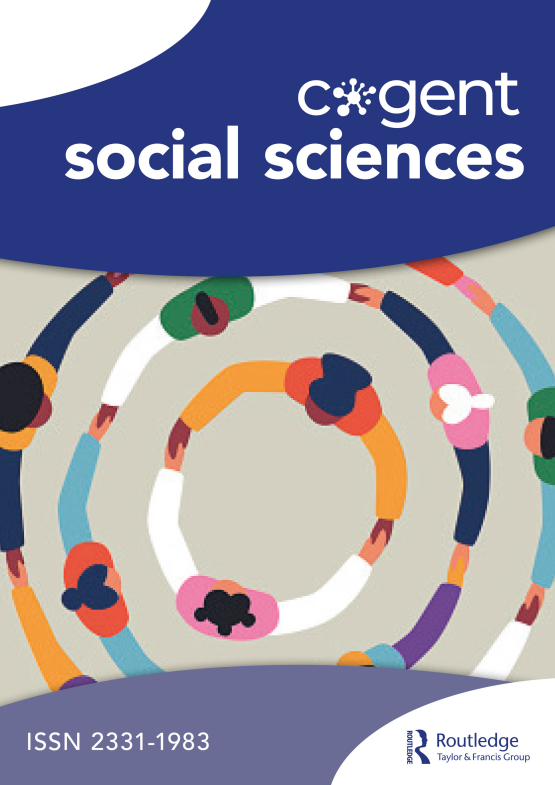Submit a Manuscript to the Journal
Cogent Social Sciences
For an Article Collection on
Toward a New Theory of the Public Sphere: Internet as Discursive Space for Audience Cohesive Action Concerning Climate and Other Natural Disasters
Manuscript deadline


Article collection guest advisor(s)
Dr. Judith McIntosh White,
University of New Mexico
jmw49@unm.edu
Dr. Denisse Vasquez-Guevara,
Cal Poly Pomona
denissev@cpp.edu
Toward a New Theory of the Public Sphere: Internet as Discursive Space for Audience Cohesive Action Concerning Climate and Other Natural Disasters
One of the most hallowed theories guiding communication inquiry is the work of Jurgen Habermas on the public sphere. Habermas conceptualized a public sphere at a particular moment in time – a moment of political ferment and military campaigns and encompassing the activities and viewpoints if just one class on one continent, the emergent bourgeoise of Europe (Habermas, 1991). These authors submit that Habermas’ portrayal of a singular public sphere that necessarily met face to face and addressed primarily bourgeois macro political issues is insufficient to direct current inquiries into the class composition, discourse constraints, and content foci of modern emerging multiple focused public spheres. The authors further maintain that the original industrial revolution and its sequelae gave birth to a new class, the industrial and agricultural proletariat, remaining today as principal progenitors of multiple focused public spheres, discursive spaces found primarily on the Internet. Our revision to Habermas’s Eurocentric model introduces heretofore unexplored implications of inclusive public spheres which extend to discursive spaces created and expanded by members of emergent classes such as information workers, public school teachers, and farmers, to name just a few, classes excluded from the original and subsequent formulations of political public spheres controlled by elites. Further, globalization, while restricting the ownership and control of legacy and post-modern traditional media, has opened new avenues for common people to contribute to intellectual and activist conversations. Such conversations have used internet resources to foster cohesive action in climate activism contexts, for example, such as that of Operation Sandy, an internet facilitated discourse group which boosted group consciousness around the failures of existing organizations to help victims of Hurricane Sandy, as well as serving as coordinating grassroots aid efforts.
Habermas’s theories of the public sphere are insufficient to describe modern public spheres, especially those developed by “ordinary people”, dealing issues and topics that, which may contain elements of political discourse, while touching on deeply personal emotions and bereavements, as well as on aspects of continuing climate catastrophe. Habermasian analysis conceptualized the public sphere as a specific discourse group comprising private individuals gathered together as a public and articulating the needs of society with the state. As such, he targeted the bourgeois class which had emerged in Europe, disregarding any other discourse groups within other classes or regions. Given this analysis, the authors join researchers who believe that the communication field leaves room for and would greatly benefit from continually revisiting the phenomenon of public discourse to include multiple discursive forums created to focus on the trajectory of common issues via means not limited to face-to-face interaction, but including cyberspace.
Articles solicited include original research articles and review articles, especially in the area of media and communication studies, particularly those focusing on novel empirical data and engagement with current global debates about such issues as climate change and environmental disasters. It is expected that each article will contain analysis of the relevant public spheres emerging in its area of focus. Novel empirical data can include long established qualitative research methods such as discourse analysis, focus groups, participatory action research, and case studies, as well as quantitative methods such as quantitative content analysis, computational social science, surveys, and statistical analyses. Case studies, in particular, can use empirical data to link digital discursive modes such as hashtag campaigns, online forums, podcasts, and video hosting channels, to name just a few – to real collective outcomes, such mobilizing community action that leads to policy change.
Dr. Judith McIntosh White, PhD. is an associate professor specializing in public communication of science and health.
Dr. Vasquez-Guevara is an assistant professor specializing in public communication of science and health.
Neither Dr. McIntosh White nor Dr. Vasquez-Guevara have conflicts of interest to disclose.
Benefits of publishing open access within Taylor & Francis
Global marketing and publicity, ensuring your research reaches the people you want it to.
Article Collections bring together the latest research on hot topics from influential researchers across the globe.
Rigorous peer review for every open access article.
Rapid online publication allowing you to share your work quickly.
Submission Instructions
All manuscripts submitted to this Article Collection will undergo desk assessment and peer-review as part of our standard editorial process. Guest Advisors for this collection will not be involved in peer-reviewing manuscripts unless they are an existing member of the Editorial Board. Please review the journal Aims and Scope and author submission instructions prior to submitting a manuscript.
